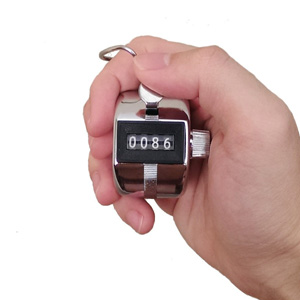
As we travel to tradeshows and have the pleasure of speaking with hundreds of people from various industries, we’re always surprised by how many say their facility counts guests using a manual tally count method.
We’ve heard of someone putting a bell on the door and the front desk personnel marks a tally as they hear a guest enter. We’ve also heard of the “snapshot” approach, where an employee walks the facility for a headcount during the perceived busy time of day. And others use a volunteer at the door with a hand-clicker to count guests as they enter.
SenSource has been in business for over 20 years and we’ve experienced advancements in automated people counting technology over that time. Modern systems are much more streamlined in cost, installation, and software than their predecessors. If you haven’t considered an automated system, now is a great time to learn more!
The two main faults with a tally counting method are the data and the reporting. Inconsistencies and inaccuracies are inevitable when humans perform the counting. No two employees will count in exactly the same manner, especially when it comes to estimating a large crowd or counting in a distracting environment.
Not only is there room for human error in collecting the data, but it’s also prevalent in transferring that data for reporting. The data needs to go from the tally clicker or notepad to a spreadsheet or computer program, requiring another manual labor step and the opportunity for inaccuracies.
At the end of the day, you’re left with mediocre traffic counts that still need to be manipulated in a spreadsheet for further analysis.
An automated people counting system alleviates the pain points of manual counting by providing a fully hands-off, and consistently accurate solution. At SenSource we’ve worked with customers of all sizes and industries and would love to learn more about your application and how an upgraded system can benefit you!
